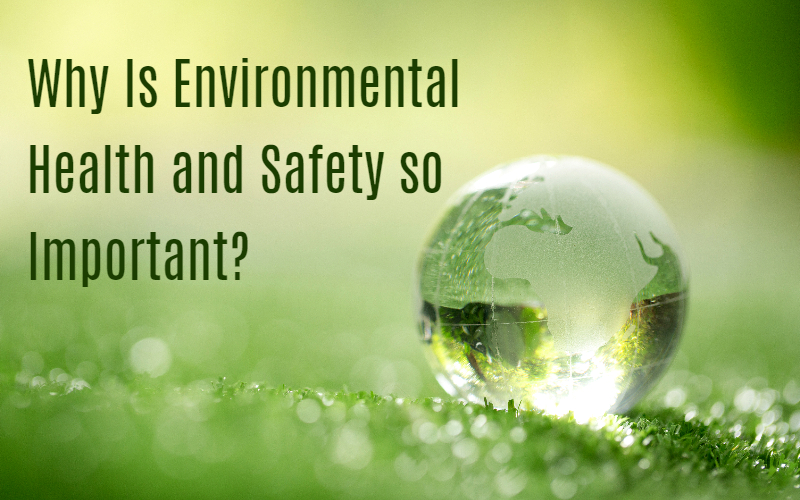Why Is Environmental Health and Safety so Important?
EHS stands for “Environment, Health and Safety” and for several companies, an important part of their processes is EHS management, which means the codification and practice of procedures aimed toward making certain the security of employees and their surroundings. Technology has remodeled the way EHS is managed: It’s allowed management systems to become a lot more finely tuned and efficient and outlined the role of corporate culture in boosting EHS performance.
To better understand the EHS management meaning, we’ll break down every letter of the acronym. These are a number of the areas EHS processes attempt to safeguard and make safer.
- Environment: This refers to the globe around you and concerns preventing things like chemical spills and air pollution.
- Health: This typically refers to things that may make people ill, like pathogens, radiation, and exposure to noise or dangerous smells.
- Safety: The safety side of EHS is concentrated on preventing workplace accidents and injuries.
Why Is EHS Management Important?
Many companies use an EHS management system and may never wonder why. EHS management system protocols are important as they prevent a significant number of diseases, injuries, and environmental hazards. Workplaces have come a long way since the terrible tragedies that once occurred. fairly regular, like the Triangle Shirtwaist Fire, which killed 146 workers and caused heightened awareness and regulation of work safety.
Organizations like OSHA, along with EHS management efforts around the world, have made businesses safer for workers, but mine explosions and oil spills are modern reminders of why EHS management is so important. the health and safety of workers. OSHA has conducted many studies that show the clear benefits of using EHS programs.
Simply put, EHS management saved lives. As the production of consumer goods has increased exponentially, so has energy consumption and the threats to the environment and people’s homes. EHS has helped protect the planet from these threats while helping businesses thrive. It has also helped dramatically improve workers’ rights and safety. It is only the law to comply with EHS regulations, but it is a responsibility owed to your employees and the planet. Fortunately, EHS managers and EHS management apps can make this task easier than ever.
What Does an EHS Manager Do?
An EHS manager has many roles. Sometimes there are so many responsibilities that the tasks are divided among a team of people. In general, the EHS manager is there to identify, reduce and control risks and hazards. Some of the tasks can be. Responsible for:
- Conducting Occupational Hazard Analysis
- Leading the Health and Safety Management Program
- Assisting in Leading Safety Committees
- Conducting Incident Investigations
- Tracking Environmental, Health and Safety Training
- Enforcing EHS Regulations
- EHS Managers Collect, Analyze and Lagging indicators
- Improvement in operational and human performance
- Organization of safety committees
EHS Management System Benefits
EHS regulations are an evolving system and keeping up with them can be challenging, depending on the nature of your business and the area in which you operate. Using EHS management software can help you keep track of changes and make informed decisions. Management software offers benefits that can help you track EHS challenges and improve your performance. The main advantages of the EHS management system include:
- Optimized data collection – Using a customizable platform allows greater flexibility in collecting data that precisely matches your processes and business needs. Securely store all the incident details and supporting documents you need in one central location to make sure you’re compliant and ready for anything
- Data logging on the go – Many people use mobile apps to improve their EHS management process because collecting data on the go is convenient and accurate, and this information can be directly synced to the database at any time. all incident information, including photos and documents, in one safe place, from anywhere, on any device.
- More consistency: Centralized information leads to better consistency in data acquisition and better data quality. That way, you can make smarter decisions by having complete visibility across all locations, incident types, root causes and more.
- Improved Reporting Efficiency – Organize and simplify reporting by making it easier to keep track of information in an integrated system. Using a flexible platform will help your company track and keep up with changes in reporting standards and regulations.
- Better Regulatory Compliance – EHS software makes it easier to collect data for compliance with OSHA rules and regulations.
The Future of EHS Management
EHS is constantly evolving as the world becomes more aware of environmental concerns, new technologies develop, and new protective measures are required. The focus of EHS professionals is to keep pace with the times and to adapt to the best possible use of the technology. enlargement has profound implications for ETS regulations; As our world becomes more interconnected, businesses are expanding into new areas, and this uncharted territory means there are a number of local regulations and considerations that must be carefully considered to ensure compliance with EHS standards. Changing technology also affects new regulations, creating new ways to follow standards and stay compliant.
